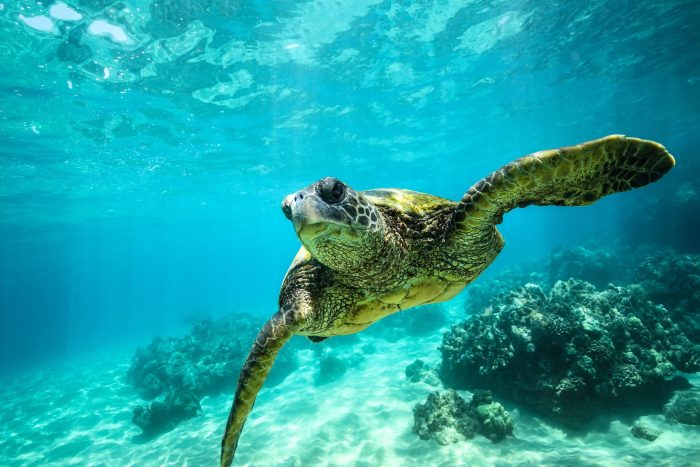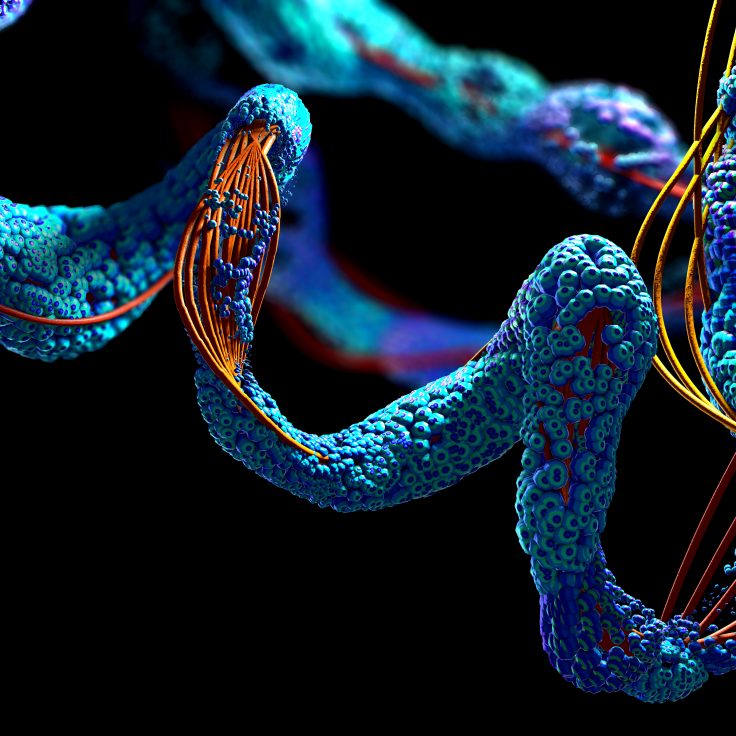
Why do Sea Turtles Consume Plastic? Blame the Smell
Plastic debris in our oceans poses a major threat to marine wildlife, especially for sea turtles, who often mistake plastic for food.
Previously it was thought that sea turtles see plastics and visually mistake them for prey like jellyfish, but new research in the journal Current Biology co-authored by courtesy faculty member JOSEPH PFALLER at the Archie Carr Center for Sea Turtle Research provides startling new evidence for how another sense is leading sea turtles astray.
“Our study shows that sea turtles may be attracted to plastic not only by the way it looks but also by the way it smells,” Pfaller said. “When plastics drift in the sea, they develop a community of bacteria, algae and small animals on their surface that gives off odors that turtles seem to like. This could attract sea turtles into an ‘olfactory trap’ — sometimes fatally.”
This process of microbes, algae, plants and small animals accruing on wet surfaces is known as biofouling.
Previous research by Pfaller’s co-author Matthew Savoca of Stanford University’s Hopkins Marine Station found that airborne odorants used by marine predators to locate good places to find food also emanate from marine-conditioned or biofouled plastic debris. After this discovery, the team wondered what this could mean for the endangered sea turtle.
To find out, the researchers enlisted 15 young, captive-reared loggerhead sea turtles. They delivered a series of airborne odorants through a pipe in an experimental arena and recorded their reactions on video. The odors they tested included deionized water and clean plastic as controls along with the turtle’s food, which contains fish and shrimp meal and biofouled plastic.
Surprisingly, the behavioral studies found that sea turtles responded to biofouled plastic in the same way they responded to their food. Compared to control odors, the turtles kept their nares (nasal openings) out of the water more than three times longer to get a good whiff.
“We were surprised that turtles responded to odors from biofouled plastic with the same intensity as their food,” Pfaller said. “We expected them to respond to both to a greater extent than the control treatments, but the turtles know the smell of their food since they’ve been smelling and eating it in captivity for 5 months. I expected their responses to food to be stronger.”
Pfaller notes that further study is needed to better understand what chemicals were emitted from the plastics that piqued the turtles’ interest and how waterborne odorants might come into play. But the new findings show that plastics of all kinds will present problems for sea turtles and other marine animals.
“The plastic problem is increasing, and our findings suggest that it is also more complex than previously thought,” he said.


